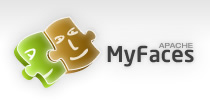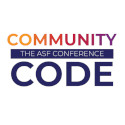<?xml version='1.0' encoding='UTF-8'?>
<!DOCTYPE web-app PUBLIC
"-//Sun Microsystems, Inc.//DTD Web Application 2.3//EN"
"http://java.sun.com/dtd/web-app_2_3.dtd">
<web-app>
<display-name>Car Store</display-name>
<description>Buy a car.</description>
<context-param>
<param-name>javax.faces.application.CONFIG_FILES</param-name>
<param-value>
</param-value>
<description>
Comma separated list of URIs of additional faces config files.
(e.g. /WEB-INF/my-config.xml) Attention: /WEB-INF/faces.config.xml is added automatically.
See JSF 1.0 PRD2, 10.3.2
</description>
</context-param>
<context-param>
<param-name>javax.faces.STATE_SAVING_METHOD</param-name>
<param-value>server</param-value>
</context-param>
<context-param>
<param-name>myfaces_allow_javascript</param-name>
<param-value>true</param-value>
<description>
This parameter tells MyFaces if javascript code should be allowed in the
rendered HTML output.
If javascript is allowed, command_link anchors will have javascript code
that submits the corresponding form.
If javascript is not allowed, the state saving info and nested parameters
will be added as url parameters.
Default: "true"
</description>
</context-param>
<context-param>
<param-name>myfaces_pretty_html</param-name>
<param-value>true</param-value>
<description>
If true, rendered HTML code will be formatted, so that it is "human readable".
i.e. additional line separators and whitespace will be written, that do not
influence the HTML code.
Default: "true"
</description>
</context-param>
<!-- Faces Servlet -->
<servlet>
<servlet-name>Faces Servlet</servlet-name>
<servlet-class>javax.faces.webapp.FacesServlet</servlet-class>
<load-on-startup>1</load-on-startup>
</servlet>
<!-- Faces Servlet Mapping -->
<servlet-mapping>
<servlet-name>Faces Servlet</servlet-name>
<url-pattern>*.faces</url-pattern>
</servlet-mapping>
</web-app>



